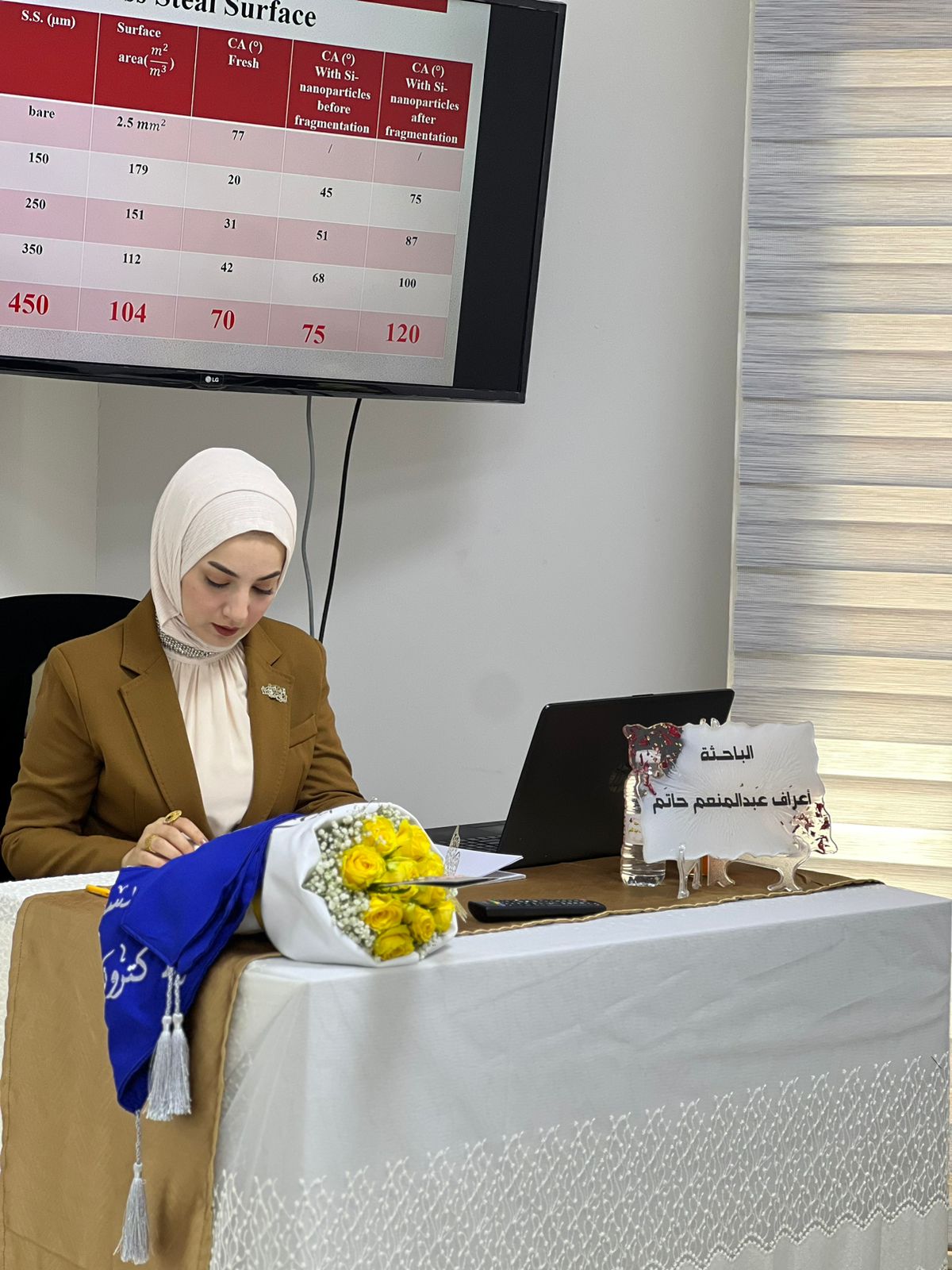Visitors: 31429851 Views
Done By: Laser & Optoelectronic Engineering Department
Post Date: 2024-02-27
Last Browse: 2025-11-08

Discussion by master’s student Aaraf Abdulmunaim Laser Produced Micro/Nano structuresfor Hydrophobic and Hydrophilic Surfaces ABSTRACT Hydrophobic and hydrophilic surfaces areuseful in many different applications. Surface reconstruction for various materials was performed using different laser techniques devoted to the synthesis hydrophobic and hydrophilic surfaces. Photo and photoelectrochemical etching of silicon using a CW diode laser of 532 nm was carried out to synthesize nanostructured layer with contact angles varied from 70° to 115° according to the preparation conditions. This process produces hydrophobic surfaces. A fiberlaser of 1064 nm wavelength, 10 KHz, 128 ns, and output power of 30 W was employed for surface microtexturing of glass and stainless steel. A hydrophilic effect on the laser treated surfaces was observed. Contact angles in the ranges (10°-35°) and (20°-74°) for the glass and stainless-steel microstructures, respectively. Moreover, superhydrophilic surfaces haveminimum contact angles (10°) and (20°) for both glass and stainless steel respectively. When silicon nanoparticles of average size (10 nm) embedded in microstructured surfaces for those two materials, the contact angle increases due tothe large surface area of the silicon nanoparticles. It has found that stainless steel microstructured surfaces produced by laser texturing exhibit a hydrophilic effect with contact angles less than 70°. This surface property was converted to super-hydrophobic with contact angles around 160° for an aging time of 55 days. Various characterization methods were used such as AFM, SEM, FTIR, and Raman spectroscopy along with computer software to analyze the experimental data.